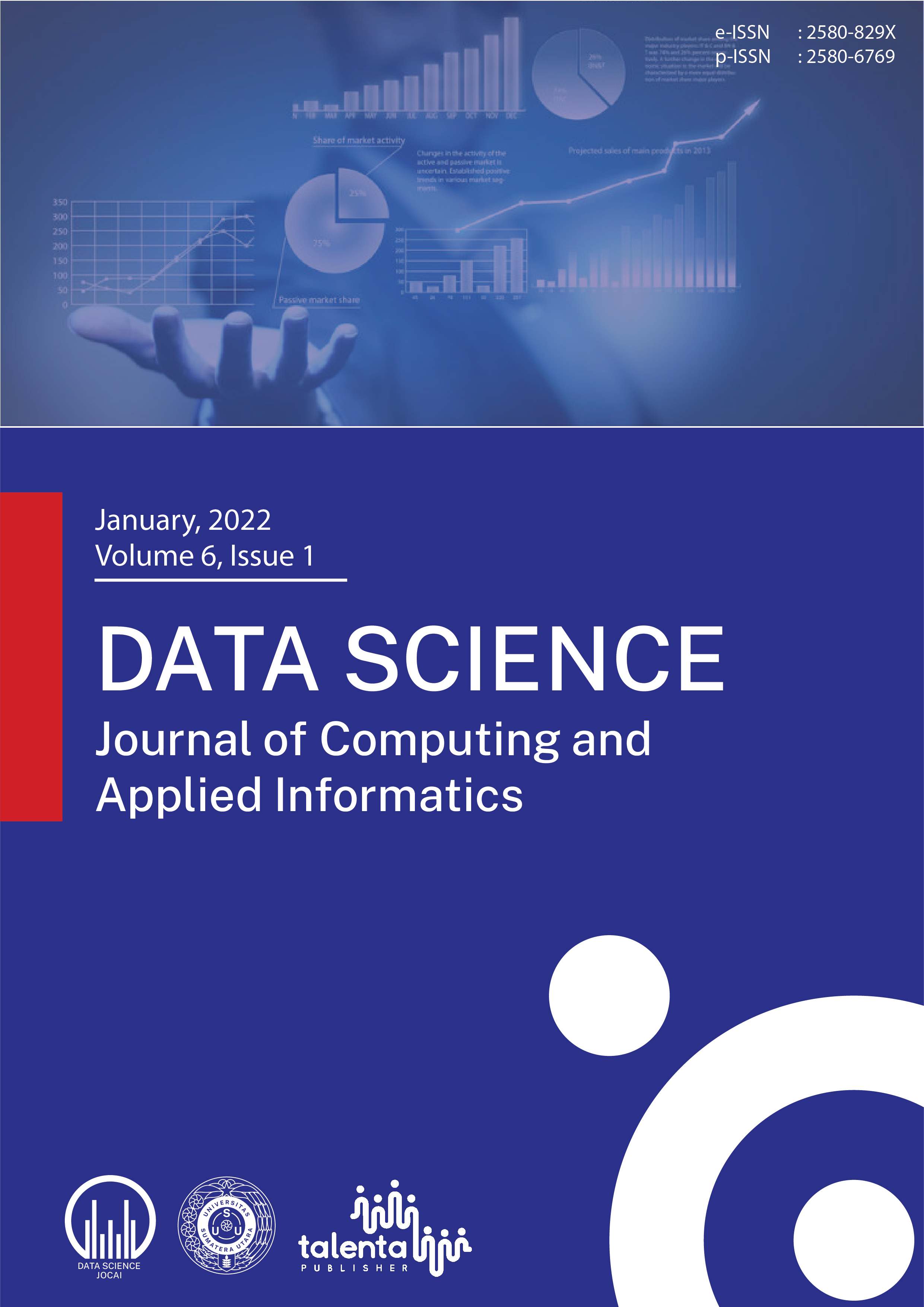An Optimized Wireless Network Architecture for Department of Agriculture, Region 1
DOI:
https://doi.org/10.32734/jocai.v6.i1-7873Abstract
In the emergence of the highly connected Internet of Things (IoT) and the rise of wireless network technologies, organizations are confronting expanded wireless network capability, stability, and reliability. Each organization that aims to manage wireless network services that customers and employees request must be robust, secured, and easy to manage, henceforth; optimized wireless network architecture ought to be a top priority. This study developed the optimized wireless network architecture for the Department of Agriculture, Region 1 to further provide a robust, more secure, and reliable wireless network design using a Prepare, Plan, Design, Implement, Operate and Optimize Methodology. The comparative and evaluative research design was used in determining the wireless network status of the current wireless network design of the Department of Agriculture, Region 1 into other agencies' wireless network designs and standards as well as the testing and implementation of the optimized wireless network architecture. Wireless network simulation and results of the wireless network design are interpreted using the Received Signal Strength Level (RSSL) and service coverage area. The testing of the optimized wireless network architecture shows that it is reliable, stable, robust, and secured and it is applicable in the agency.
Downloads
References
Huzaifah, A. S., Adriansyah, R. F., & Malik, R. F. (2021). Impact of Evaporation on the Performance of Ant Colony Optimization-Based Routing Protocols on the Wireless Sensor Network. Data Science: Journal of Computing and Applied Informatics, 5(1), 18-27.
Bobescu, B., &Alexandru, M. (2015).Mobile indoor positioning using WI-FI localization. Review of the Air Force Academy, (1), 119.
Cisco. (2018). The Benefits of Centralization in Wireless LANs via the Cisco Unified Wireless Network Retrieved on 2006 from https://www.cisco.com/web/AP/ wireless/pdf/Benefits_of_centralizedWLan.pdf
Corey F. (2017). The 5 Wireless Networking Issues Every IT Pro Deals With Retrieved on June 20, 2017
Chua W. (2020). Why (Project) BASS matters? Retrieved on October 12, 2020 from https://mb.com.ph/2020/10/12/why-project-bass-matters/
Dezfouli, B., Esmaeelzadeh, V., Sheth, J., &Radi, M. (2018). A review of software-defined WLANs: Architectures and central control mechanisms. IEEE Communications Surveys & Tutorials, 21(1), 431-463.
DICT. (2018). DICT ties up with Project BASS to monitor performance of TelcosRetrieved on July 19, 2018 fromhttps://dict.gov.ph/dict-ties-up-with-project-bass-to-monitor-performance-of-telcos/
DICT. (2021). Free Wifi for All. Retrieved on July 10, 2021 fromhttps://dict.gov.ph /major-programs-and-projects/national-connectivity/free-internet-wi-fi-connectivity-in-public-places/
DICT. (2018).Government Network. Retrieved on December 12, 2018 from https://www.gov.ph/web/integrated-government-philippines-program/services/infrastructure/government-network
Esser, F., &Vliegenthart, R. (2017).Comparative research methods. The international encyclopedia of communication research methods, 1-22.
Elrashdi A.(2018) Development PPDIOO methodology to be compatible with technical projects for computer networks.
Gunantara, N., Sudiarta, P. K., Prasetya, A. A., Dharma, A., &Antara, I. G. (2018, April). Measurements of the received signal level and service coverage area at the ieee 802.11 access point in the building. In Journal of Physics: Conference Series (Vol. 989, No. 1, p. 012014). IOP Publishing.
Interesting Engineering. (2019). These 9 Cities Offer the Largest Free Wifi Networks. Retrieved on October 23, 2019 from https://interestingengineering.com/these-9-cities-offer-the-largest-free-wifi-networks
Kushner, S. (2016). Evaluative research methods: Managing the complexities of judgment in the field. IAP.
McMillan, T. (2015). Cisco networking essentials.John Wiley & Sons.
Morgan, K. (2019). Computer Networking Beginners Guide. The Complete Basic Guide to Master Network Security, Computer Architecture, Wireless Technology and Communications Systems including CISCO, CCNA and the OSI Model.
Nair M. (2019). 5 Countries in the World where you can enjoy freeeWi-fi. Retrieved on October 3, 2019 from https://www.makemytrip.com/blog/countries-with-free-wifi-internet
Panagiotopoulou V. (2015) Controller-based Wireless Design and Evaluation Retrieved
Patrick C. (2021). Top 20 Countries with Free Wifi: Stay Connected to your Online World on the Go! Retrieved on February 2021 from https://traveltriangle.com /blog/countries-with-free-wifi/
Ruckus.(2019). Ruckus Zone Director 1200 Data Sheet.Retrived on 2019 fromhttps://www.netwifist ore.com/datasheets/ds-zonedirector-1200.pdf
Ruckus.(2019). Ruckus Zone Director 1200 Data Sheet.Retrived on 2019 fromhttps://www.netwifist ore.com/datasheets/ds-zonedirector-1200.pdf
Ruckus.(2020). Ruckus R510 Data Sheet.Retrieved on 2020 from https://webresources.ruckuswireless.com/datasheets/r510/ds-ruckus-r510.pdf
Shahrokh, Z. D., &Miri, S. M. (2019).A Short Introduction to Comparative Research.
Sarkar, N. (2014). Improving the performance of wireless LANs: A practical guide.Taylor & Francis.
Sivasubramanian, B., Frahim, E., &Froom, R. (2010).Analyzing the Cisco Enterprise Campus Architecture. Cisco Press.Luettu, 1, 2013.
White, M. B. (2018). Computer Networking: The Complete Guide to Understanding Wireless Technology. Network Security, Computer Architecture and Communications Systems (Including Cisco, CCNA and CCENT).CreateSpace Independent Publishing Platform.
Downloads
Published
How to Cite
Issue
Section
License
Copyright (c) 2022 Data Science: Journal of Computing and Applied Informatics

This work is licensed under a Creative Commons Attribution-ShareAlike 4.0 International License.















